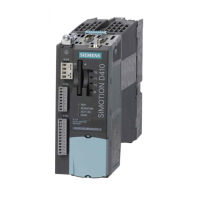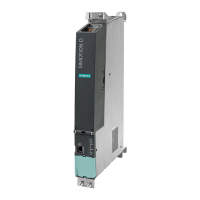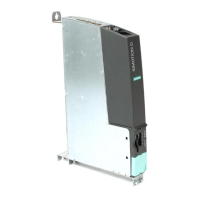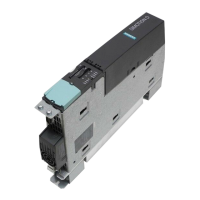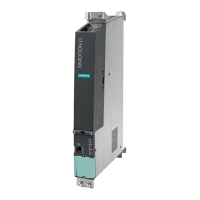Commissioning (hardware)
4.3 User memory concept
SIMOTION D4x5-2
98 Commissioning and Hardware Installation Manual, 02/2012
Power-up and non-volatile SIMOTION data
The table below lists the cases that can arise during power-up in conjunction with the non-
volatile SIMOTION data and explains how they are handled.
Table 4- 3 Cases: Power-up with non-volatile SIMOTION data
Case Initial condition Result
1 The non-volatile SIMOTION data is valid. SIMOTION D4x5-2 powers up with the non-volatile
SIMOTION data, i.e. with the PROFIBUS address in the
non-volatile data.
2 The non-volatile SIMOTION data is invalid and there
is no backup file (PMEMORY.XML) and no backup
copy of the backup file (PMEMORY.BAK).
SIMOTION D4x5-2 copies the default settings to the non-
volatile SIMOTION data and powers up with this data. In
this case, for example, the default PROFIBUS address is
used.
3 The non-volatile SIMOTION data is invalid, backup
file (PMEMORY.XML) exists and is valid.
SIMOTION D4x5-2 copies the backup file contents to the
non-volatile SIMOTION data and powers up with this
data.
4 The non-volatile SIMOTION data is invalid, the
backup file is invalid and there is no backup copy of
the backup file (PMEMORY.BAK).
SIMOTION D4x5-2 copies the default settings to the non-
volatile SIMOTION data and powers up with this data, in
which case, for example, the default PROFIBUS address
is used.
5 The non-volatile SIMOTION data is invalid; a backup
file exists, but it is invalid; a backup copy of the
backup file exists and is valid.
SIMOTION D4x5-2 copies the backup file contents to the
non-volatile SIMOTION data and powers up with this
data.
Non-volatile SIMOTION data diagnostics
The user can determine the status of the non-volatile SIMOTION data and the battery using
the diagnostics buffer, system variables, and PeripheralFaultTask.

